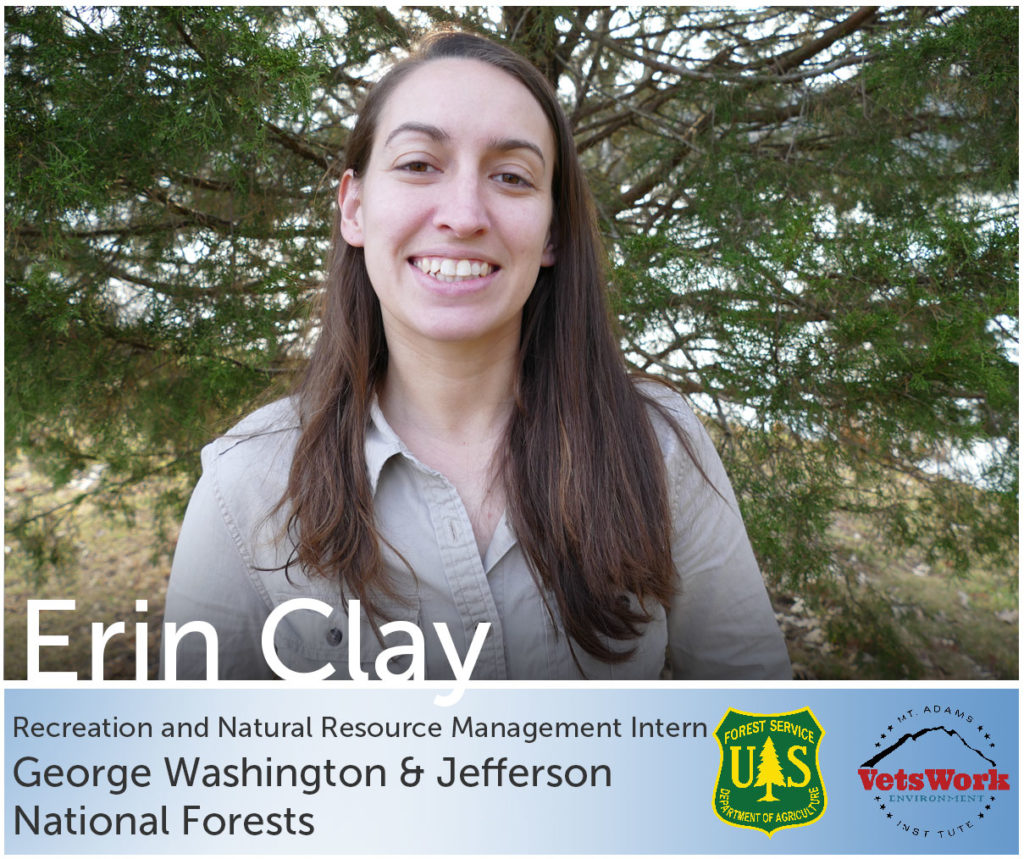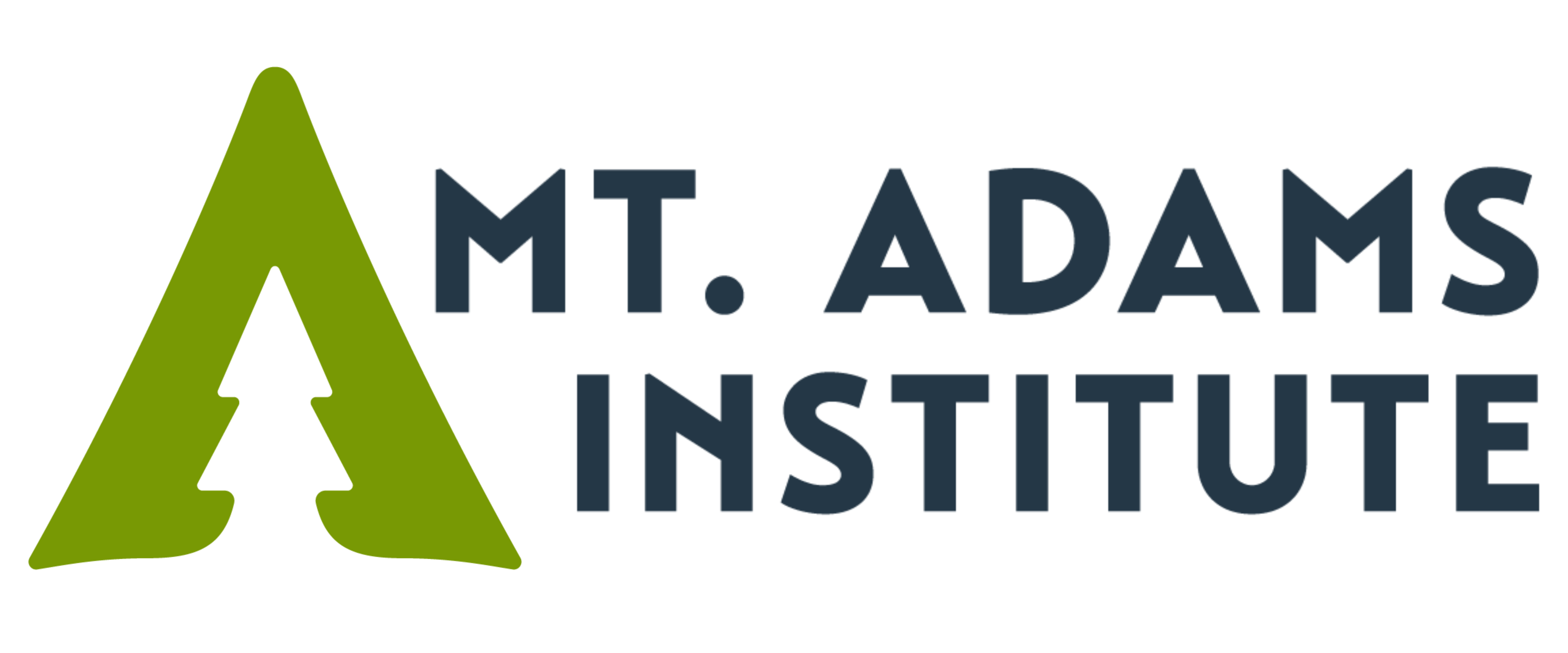
During my first year of VetsWork, I was mostly getting introduced to fieldwork, having been a visitor assistant for the U.S. Forest Service previously. I gained a solid base skill set for continued work in natural resource management. At the end of that term, I was really interested in taking my experience and education to the next level. Looking back on everything that has happened between now and then, I feel like I am accomplishing that goal. I was a little worried that year two would just be a repeat of year one and wouldn’t be all that enriching even though it would still be fun. I was definitely wrong! I also enrolled in a Masters program for natural resources this year and I think it has really helped me as a hands on learner to be doing projects at work that frequently relate to what I am studying in school. Let me tell you about some really awesome projects that I’ve worked on so far this year.
I had the opportunity to disk and plant a wildlife clearing with clover and sunflowers. I was simultaneously working on an invasive species reporting project, so I also got a chance to get hands on reporting for my project as well as learn to recognize and mitigate Johnson Grass, which will take over the fields and choke plants that are valuable to wildlife if left unchecked.
The Youth Conservation Corps girls and I have cleared many trails during their 8 week stint on my district. We cleared some small trees that had fallen over a portion of the trail near a stream, encouraging hikers to create a social trail through the stream. When we were done we found salamanders and turtles whose habitat had been threatened by the destruction of the trail.
I got a chance to attend a trip with some local foresters and employees of the Supervisors office to view several burn plots on our district. This project is part of the yellow pine restoration project that is implementing various methods of ground disturbance, including prescribed burning to encourage yellow pine species to return to an area where they decreased in population due to near eradication of fire from the landscape. I was simultaneously working on a dendrology project for school and was able to parse out the different species of yellow pine and research more about why fire is so necessary to these species, and different strategies to encourage a more historically biodiverse landscape.
Sometimes protection of the resource means restriction. We put a new gate up in an area called Crabtree Meadows, where people were driving through in order to be able to park right next to their campsite. It was turning the meadows into a muddy mess.
At a popular local fishing spot, the trail was being cut down a steep bank. This was damaging the important buffer zone around the lake that serves as crucial habitat. It was also contributing to erosion. This area is comprised of EVARD Sandy Loam with slopes between 35 and 60 percent and has a K Factor or .37, which means it was already moderately susceptible to erosion before anyone started walking on it frequently. I put down a seed mix of rye and red fescue that is particularly good for erosion control and covered it with a biodegradable seed mat. I then installed two carsonite posts with educational information on them to encourage people to stay off the area being rehabilitated. I came back 3 weeks later and it looks like it is working very well. I will be cutting a new, more sustainable trail in place of this social trail in the coming weekend. I used this project as a component of an assignment in my Landscape Systems class.
I was able to take time away from my internship and do two weeks on a Forest Service type 6 engine to serve as Initial Attack on a particularly fire prone area of Colorado. We chased lightning strikes, dug lots of hand line, got up close and personal with retardant drops and I learned a lot about how the engine works and what it can do. Having fought fire now in Montana, Texas, Virginia, and Colorado I am gaining a greater understanding of fuel types, importance of local conditions, different strategies and tactics, the particular threat of invasive species as it relates to creating fire prone forests, and the necessity of robust prescribed burn programs.
Eel and Trout survey – I did nearly a week of shocking and inventorying fish and eels in the St. Mary’s and Tye Rivers. We installed PIT (passive induced transponder) tags in the eels and took measurements to better understand their migration patterns and density levels.
Old growth and botanical surveys – inventorying strategically selected plots to better understand what plants exist in an area and how old those plants are. I am getting a lot better at recognizing trees and plants at different life stages and during different seasons.
Invasive Species management – invasive species like kudzu, autumn olive, and English ivy decrease biodiversity by outcompeting native species. For the most part these species serve little purpose to the rest of ecosystem or to wildlife. I have spent a lot of time this year learning to hunt and mitigate invasive species and work with pesticides.
So, yeah, I’ve been doing a ton this year and increasing my education and experience by leaps and bounds. Every day is something new and it feels good to see the fruits of your labor reflected when you generate positive outcomes.

